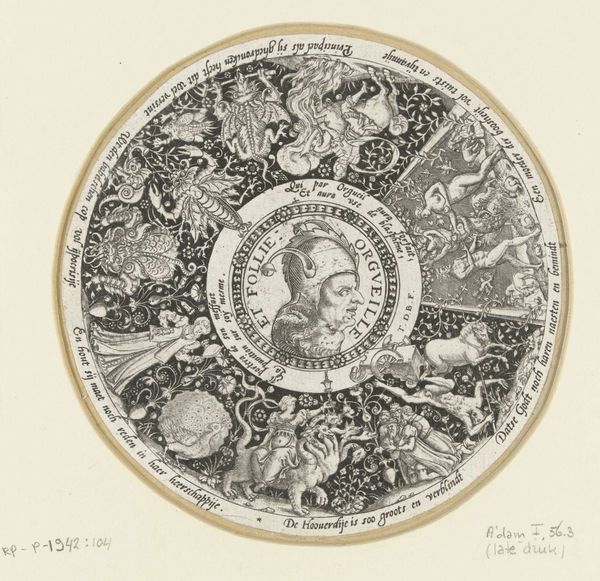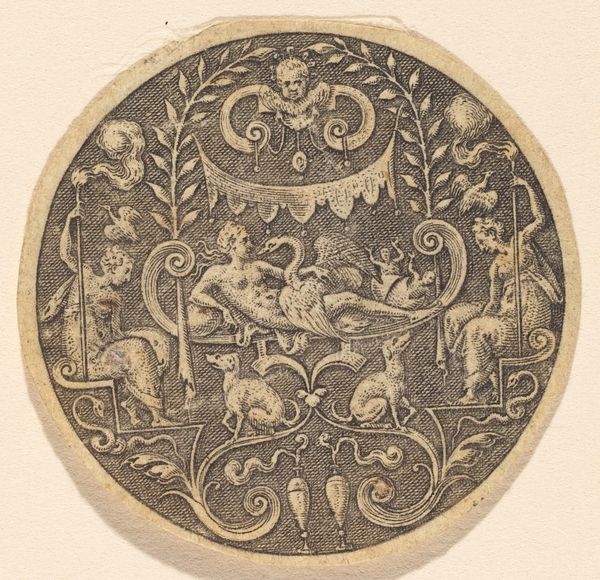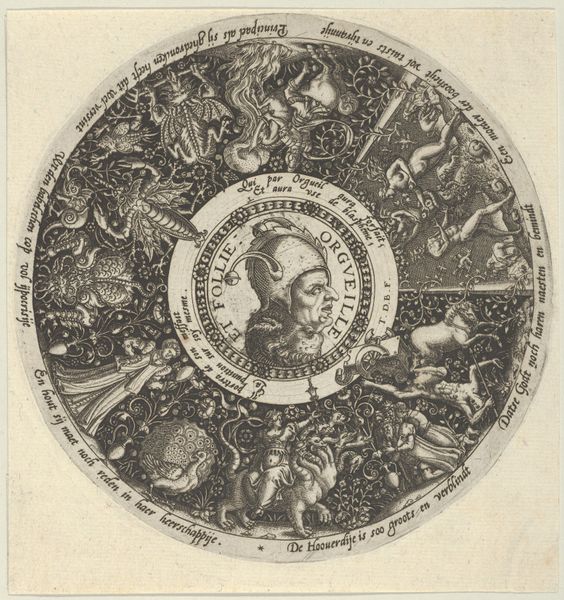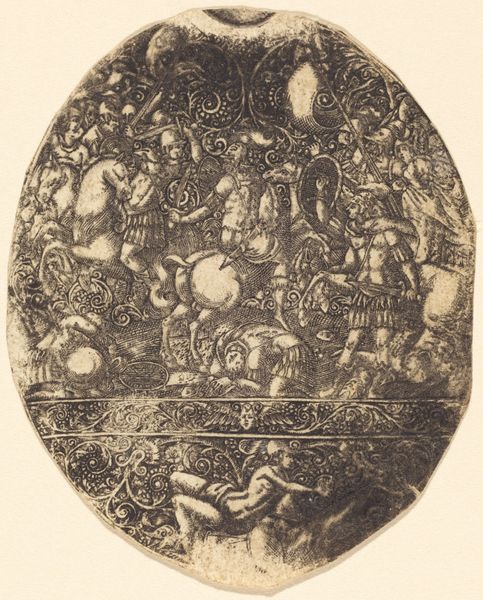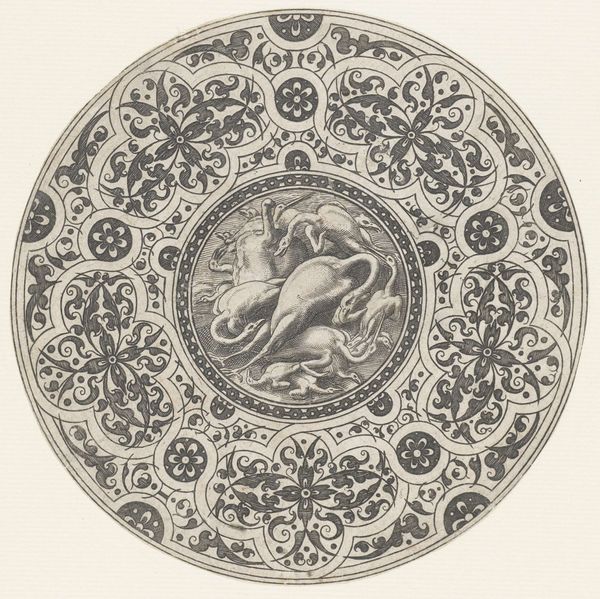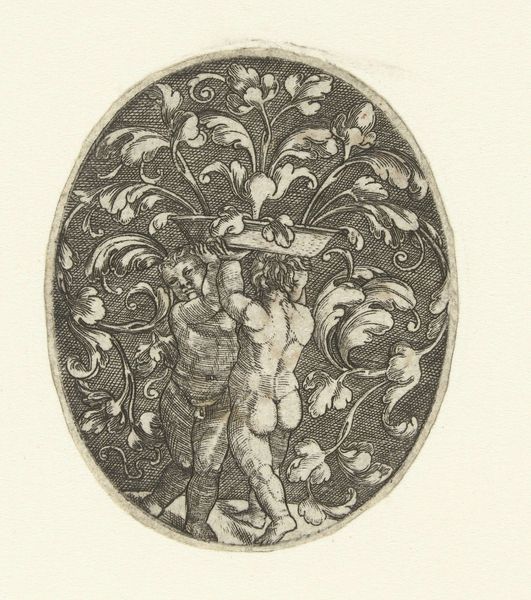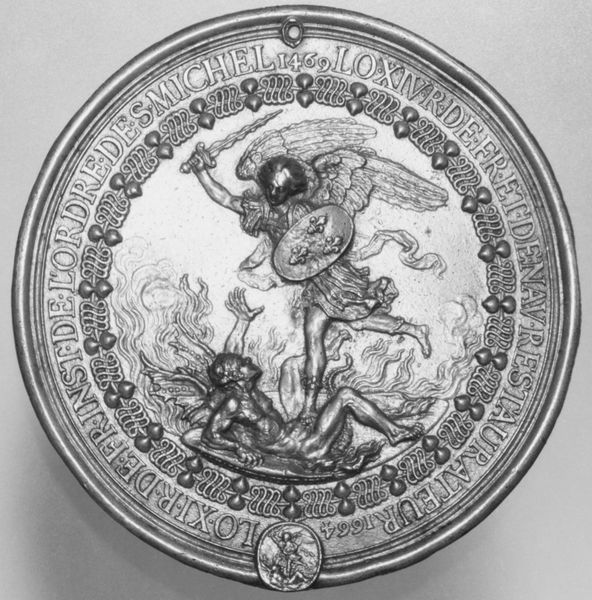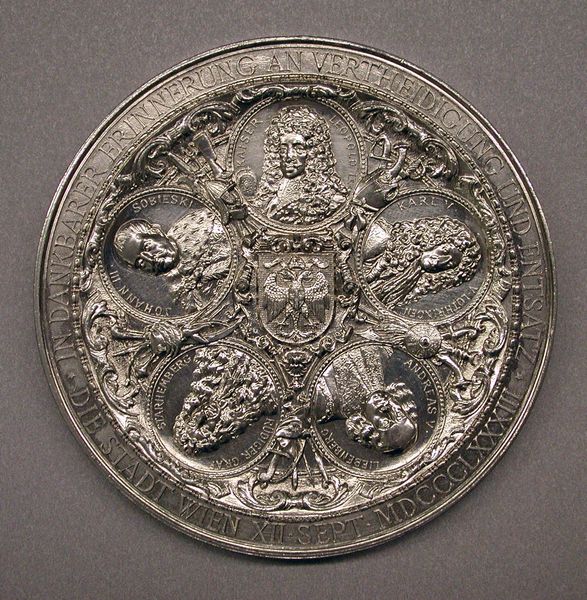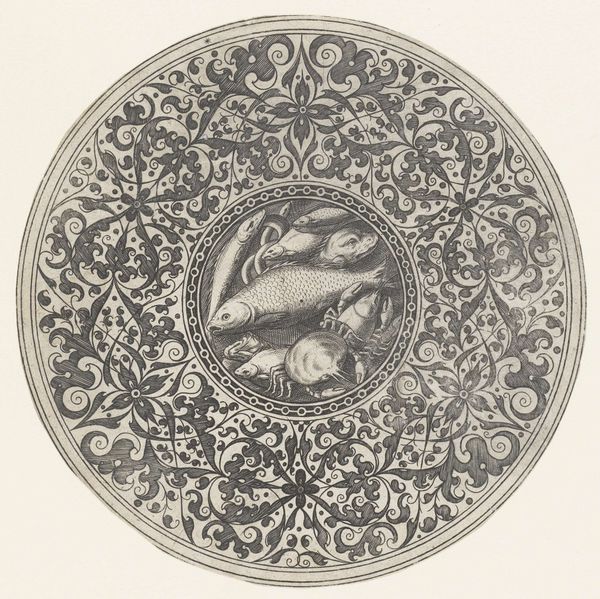
Copyright: CC0 1.0
Editor: This intriguing roundel, "Pride and Folly," by Theodor de Bry, is densely packed with allegorical figures. It feels like a commentary on societal excess. What strikes you about its construction and message? Curator: Consider the engraving process itself. The labor, the skill required to produce these fine lines and intricate details, speaks to a very specific mode of production and consumption. How does this relate to the concept of pride being critiqued? Editor: So, you're saying the craftsmanship is part of the commentary? Curator: Precisely. The very act of creating such a detailed and potentially costly image implicates the art within the social structures it critiques. Is the artist benefiting from the very folly he depicts? Editor: I never thought about it that way, the medium itself as a message about labor and class. Curator: It shifts our understanding, doesn’t it? From a simple moral lesson to a complex engagement with 16th-century social and material conditions.
Comments
No comments
Be the first to comment and join the conversation on the ultimate creative platform.
